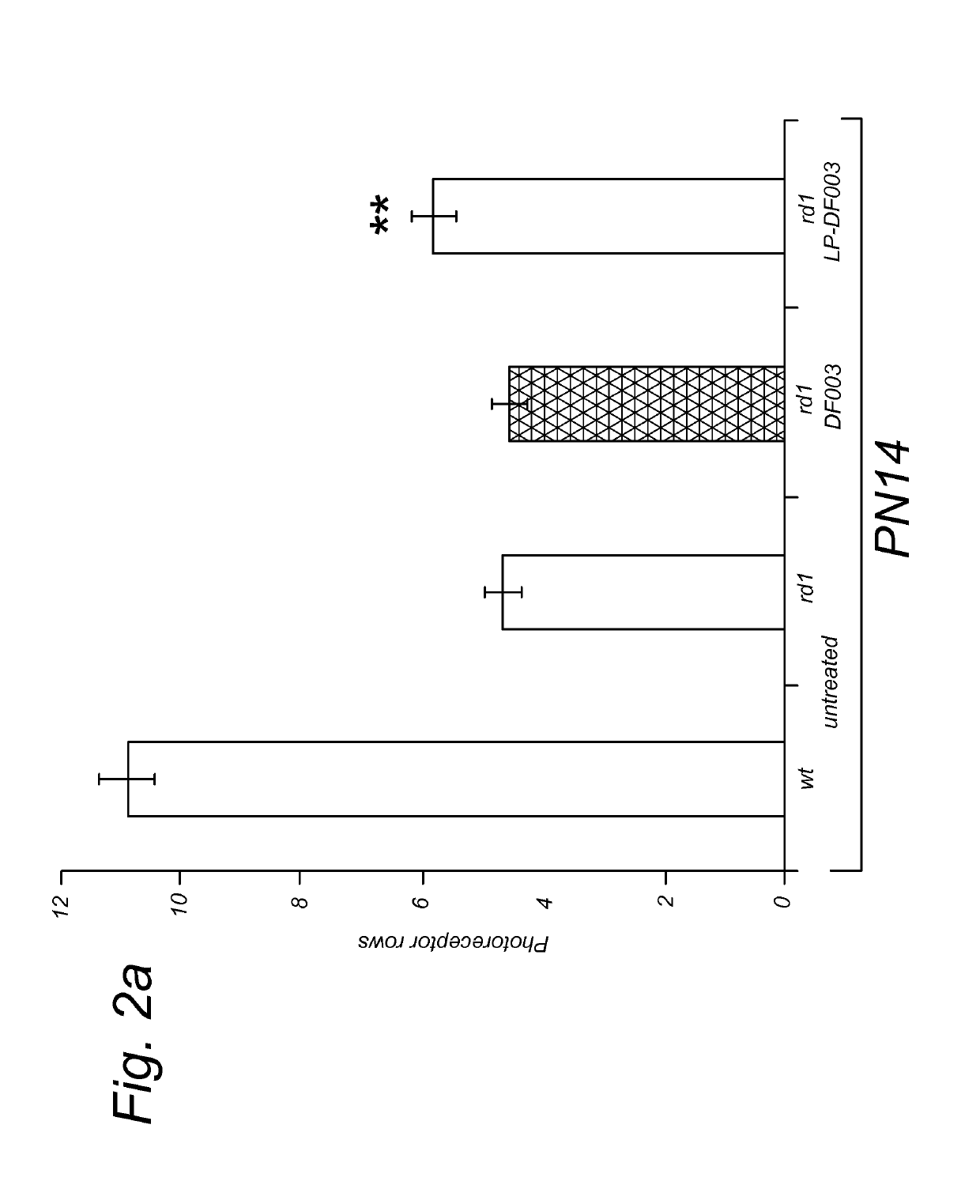Targeted liposomal delivery of cGMP analogues
a technology of liposomal and analogues, applied in the field of medicine and pharmacy, can solve the problems of incomplete blindness, no clinically approved treatment available, and only very little information on the subsequent degeneration mechanism, so as to reduce the frequency of repeated administration, prevent unnecessary systemic exposure, and efficient delivery of therapeutic and/or diagnostic agents
- Summary
- Abstract
- Description
- Claims
- Application Information
AI Technical Summary
Benefits of technology
Problems solved by technology
Method used
Image
Examples
examples
1. Materials and Methods
1.1 Production of GSH-Conjugated Liposomes Encapsulating cGMPS
[0140]First, micelles were prepared by mixing (molar ratio 1:1.5) DSPE-PEG2000-maleimide (NOF, Grobbendonk, Belgium, 916 mg in 36.72 mL of DI water) with glutathione (Sigma-Aldrich, Zwijndrecht, the Netherlands, 144 mg in 4.42 mL of DI water) at room temperature for 2 h. Next, micelles were added to calcium acetate hydrate (4094 mg in 57.36 mL of DI water; final concentration 200 mM) and kept at 60° C. for 30 minutes.
[0141]2808 mg of HSPC (Hydrogenated Soy Phosphatidylcholine; final concentration 28 mM) and 912 mg of cholesterol (final concentration 18.6 mM) were dissolved in 30.96 mL ethanol in a serum bottle, mixed with the micelles while stirring and incubated in a water bath for 30 min at 60° C. Finally, the liposomes were extruded using 0.2 / 0.2 μm PC membrane (2 times), 0.2 / 0.1 μm PC membrane (2 times) and 0.1 / 0.1 μm PC membrane (2 times) at 60° C. and stored at 4° C. The size of liposomes was...
PUM
 Login to View More
Login to View More Abstract
Description
Claims
Application Information
 Login to View More
Login to View More - R&D
- Intellectual Property
- Life Sciences
- Materials
- Tech Scout
- Unparalleled Data Quality
- Higher Quality Content
- 60% Fewer Hallucinations
Browse by: Latest US Patents, China's latest patents, Technical Efficacy Thesaurus, Application Domain, Technology Topic, Popular Technical Reports.
© 2025 PatSnap. All rights reserved.Legal|Privacy policy|Modern Slavery Act Transparency Statement|Sitemap|About US| Contact US: help@patsnap.com



